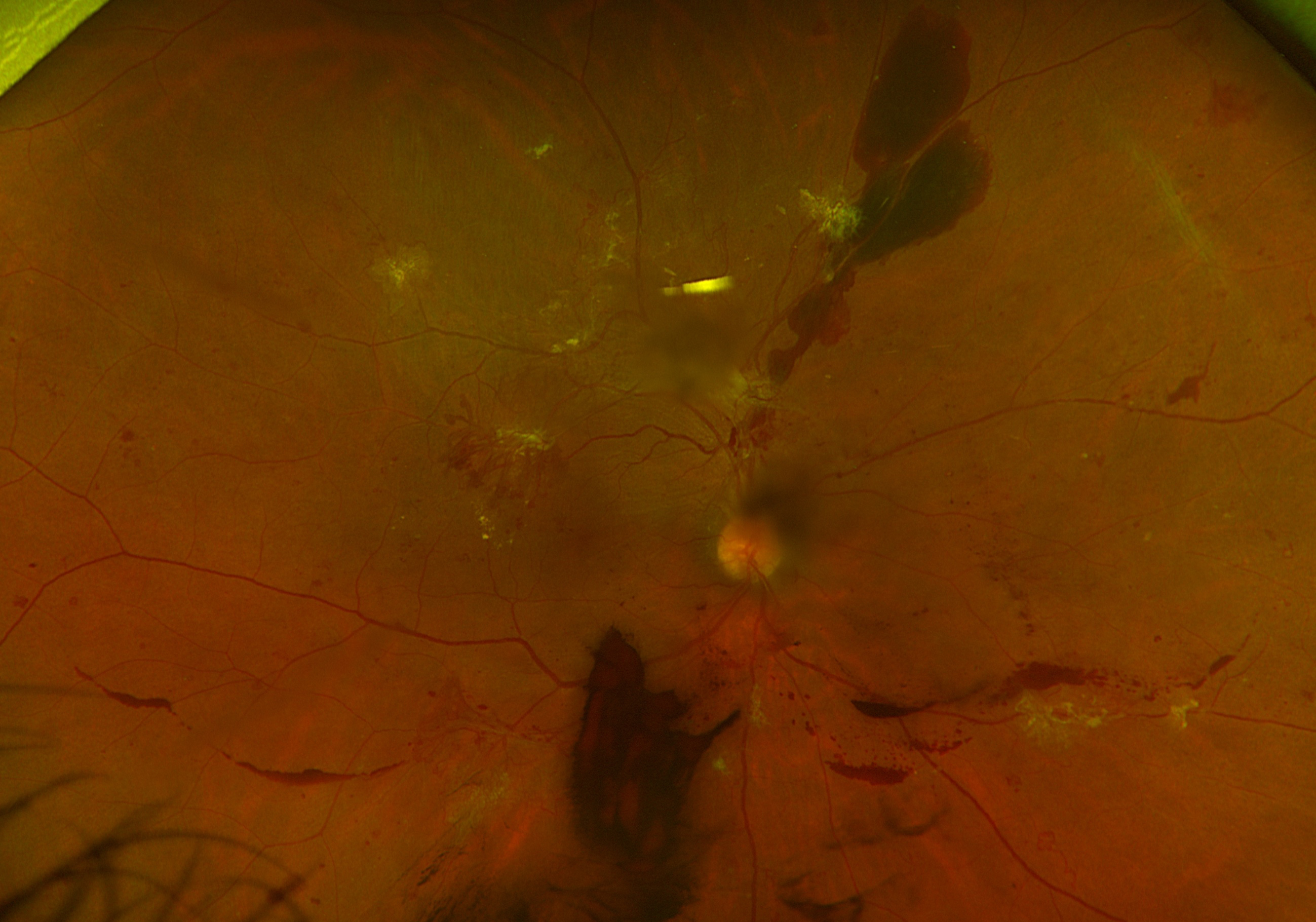 |
| To more accurately explore the relationship between DR and different refractive degrees in different races of a Western population, researchers analyzed the data from the National Health and Nutrition Examination Survey dataset. Photo: Rami Aboumourad, OD. Click image to enlarge. |
Although the pathogeneses are different, the progression and development of both high myopia and diabetic retinopathy (DR) contribute to high risks of visual impairment. Myopia is widely considered to be one of the protective factors for DR, but most studies have explored the association in Asian populations. Few studies have explored the relationship between high myopia and DR in different Western populations based on large sample sizes. A recent study performed in the US has determined that those with high myopia and diabetes were associated with a lower risk of DR.
The researchers assessed a total of 1,317 participants with diabetes, including 331 individuals with DR and 986 without. There were 610 in the total study population with refractive errors (46.3%). All data was derived from the National Health and Nutrition Examination Survey. The participants were divided into four groups (emmetropia, mild myopia, high myopia and hypertropia).
After adjustment for age, gender and race, it was found that high myopia might reduce the risk of diabetic retinopathy compared with those in the emmetropia group (odds ratio, OR: 0.43). After further adjustment for education level, BMI, family poverty income ratio, cardiovascular disease and smoking status, high myopia was still associated with a reduced DR risk (OR: 0.44). Subgroup analyses showed that subjects with high myopia in the non-Hispanic Black group were associated with decreased odds of diabetic retinopathy, OR: 0.20).
Because of the study’s cross-sectional design, the researchers emphasized that they cannot determine a causal relationship between two ocular diseases. Also, they noted that, given the absence of data on the axial length of the eye in the survey dataset, they could not assess this main factor affecting refractive error. “If axial length assessment could be provided in later National Health and Nutrition Examination Survey studies, combined with the SE classification method, it would provide more accurate measurements for myopia severity,” the authors wrote in their paper.
The team also pointed out that they had not analyzed the association between high myopia and proliferative DR because very few participants simultaneously suffered from high myopia and proliferative DR in their analysis.
“Future longitudinal studies are needed to promote an understanding of the relationship between high myopia and the progression of DR,” their study concluded.
Ten W, Yuan Y, Zhang W, Wu Y, Ke B. High myopia is protective against diabetic retinopathy in the participants of the National Health and Nutrition Examination Survey. BMC Ophthalmol. 2023;23(1):468. |

